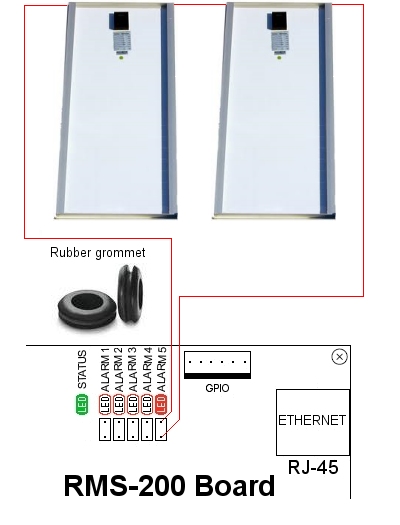Solar Panel Theft Prevention
Around the world, solar panel theft is on the rise. Most solar panels are stolen from
installations in remote areas. It happened to us! It could happen to you!

The first line of defense in solar panel theft prevention is having your building or remote
site fenced if possible. Outdoor security cameras are a good option, but they draw extra power and are
sometimes not suited to remote solar powered sites, use them if you can. Installing a
locking chain or cable system to secure your solar panels to the building is a must!
The use of Security Fasteners to attach the solar panels to each other and to the building will
also help prevent solar panel theft.




A determined thief will spend the time to steal your solar panels that are worth
hundreds of dollars each. Armed with bolt cutters, hack saws, and grinders, thieves can
eventually remove your precious solar panels despite your best efforts to prevent them.
Unfortunately, there is no way to stop a determined thief. The best thing you can do is
make your solar panels hard to steal!
There is another layer of defense that you can add to your solar panel array if you have an
RMS board from Ethertek Circuits.
The RMS remote site monitoring board
has a five zone burglar alarm that can be used to alert you to solar panel tampering and
removal. Knowing when your solar panels were removed can give the police a valuable
lead in apprehending the criminals. In fact, it is often the first question the police ask.
Being alerted to solar panel removal can give you valuable time to visit the location and
perhaps stop or scare away the criminals yourself.
This remote monitoring project was based on the need to alert us as to when our solar
panels were being tampered with or removed. This project makes use of the Alarm Pins on the
RMS remote monitoring board. We are determined to be ready if the thieves ever strike
again!
The diagram below illustrates how to use alarm input five on the RMS board to create a
security loop wire that is threaded through the frame rails of each solar panel. If the
security loop wire is ever disconnected, even for a split second, the RMS board will
know immediately and can alert you or the police by email or sms message. The RMS board
could also toggle a relay to sound a siren, turn on a camera, or run a custom program.

Installing the Security Loop Wire
Drill holes in the frame of the solar panel. Be careful not to damage the solar panel with
the drill bit. Insert rubber grommets into the holes so that the detection wires will not
chafe when the wind is blowing. Run the detection wire through the solar panel frame of
each panel, make it impossible for theives to remove the solar panels without cutting or
breaking the security loop wire. To prevent bypassing the security loop wire, be clever,
hide the security loop wire in the frame rail or disguise it with the rest of the wires.
Make an easy to spot fake security loop wire, or use two or more alarm input wires to have
several independent security loop wires. Use insulated plastic coated steel cable as the
security loop wire, make it look like a tie down cable that is just begging to be cut.
Connect each end of the wire to the RMS board alarm pins as shown above. Create email
or sms alerts and set the RMS board to fire these alerts when the detection wire loop
is broken. Have the RMS board toggle one of its relays to sound a siren or alarm. This
same technique can be used on other remote equipment such as generators, radio gear,
antennas, etc. The alarm inputs can also be used with common door contacts to monitor entry
points into the building.
Hints for Solar Panel Security
- Have your site fenced. Use 1 foot of barbed or razor wire at the top. Hang security warning signs on the fence.
- Mount your solar panels as high up on the building or structure as possible. Make them hard to get.
- Use a steel cable or chain to secure your solar panels to each other and to the building or structure.
- Use security fasteners to attach your solar panels together and to the building or structure.
- Use an RMS board to monitor security loop wires that run through the frame of each panel. Have the RMS board email you and/or send SMS messages to your cell phone. Have the RMS toggle one of its on-board relays that sounds a loud siren.
- Use an outdoor security camera if possible. Even a fake security camera can deter a thief!
- Take pictures of your solar panel installation. This will help with insurance claims.
- Record the serial numbers for police.
- Engrave clear identification into the solar panel frames.
WARNING
Because the use of an RMS remote site monitoring board can give early warning
to solar panel tampering or removal, it may be possible to catch criminals in the
act of stealing your panels! Play it safe! DO NOT try to apprehend the criminals
yourself!
Observe and report to the local police, get a description or license plate number,
take pictures if possible.

This concludes the solar panel theft prevention project. We sleep a little better at night knowing that our RMS board is on the watch, monitoring our battery voltages and keeping an eye on our equipment.



